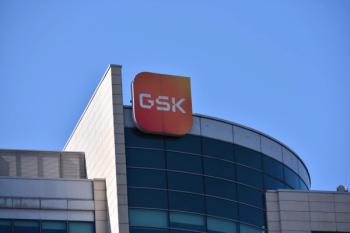
- BioPharm International-04-01-2009
- Volume 22
- Issue 4
Criteria for Selecting a CMO: A Case Study
"A systematic approach taken by a company involved making an assessment of internal capabilities, strengths, and needs before the selection process."
The contract manufacturing organization (CMO) landscape has changed dramatically over the past few years. Growth in biotechnology, an increasing emphasis on science-based technology, and the emergence of innovative virtual startups rising from the ashes of corporate mergers have spawned a variety of CMOs that offer competitive pricing and highly specialized services. These new options are wonderful from the buyer's perspective as long as a methodical approach is taken to make CMO selections that fit your company's business model.
David Moyer
A logical first step in selecting a CMO involves making an assessment of internal capabilities, strengths, and needs that can then be overlaid on anticipated external requirements. A company with marketed products and established infrastructure for manufacturing, testing, packaging, and distribution must identify pockets of supply-chain weakness and then evaluate the financial benefit of outsourcing. If the assessment identifies large-volume under capacity for a product or product line, consideration of a large offshore CMO could represent a cost-effective solution, provided there are no extenuating circumstances associated with product release or distribution. In other cases, the assessment could lead to a decision to outsource processes that require specialized expertise. The CMO choice in that scenario would be made based on an evaluation of the sponsor company's ability to manage the interface with the CMO.
CMO selection is one of the most critical decisions made by companies with limited internal resources dedicated to production, testing, and control of pharmaceutical products whose definition includes development compounds, clinical trial material, and commercial active pharmaceutical ingredients and products. This article describes a systematic supplier selection approach taken by a company with operations outside the US, but with a commitment to develop, manufacture, and gain approval to market a specialized drug product using a completely outsourced model for manufacture and testing of this product in the US.
THE CHALLENGE
The company wanted a CMO with capability to fill ampoules and vials with a sterile emulsion containing a potent drug substance whose stability is affected by exposure to elevated temperature, but not sufficiently to preclude the requirement to terminally sterilize finished dosage units. Phase 1 lots of this drug product were manufactured and tested by a reputable pharmaceutical company with primary operations in Asia. A specific homogenization technology was used to make the emulsion, which is commonly found in the US food industry, but is not as common in the pharmaceutical industry. The sponsor company did not wish to change homogenization technology because of the potential impact on emulsion properties.
The supplier selection process began with detailed review of process data from the original clinical trial material manufacturing process. The review revealed specific homogenization parameters and identified two critical features of the process that would be important for technology transfer to the CMO. The first issue was the need to use a rotating autoclave with capability to heat up and cool down quickly to preserve emulsion properties. The second issue related to equipment cleaning, but was not considered a limiting factor in the CMO selection process.
A checklist of optimum supplier attributes was developed from the data review to be used as a guideline for preliminary supplier screening. The prerequisites included:
- Experience with pharmaceutical emulsion development
- Capability to manufacture commercial-scale sterile emulsions
- Capability to handle vials and ampoules
- Onsite access to a validated rotating autoclave.
INITIAL SCREENING
Initial CMO screening was conducted using hardbound and Internet-based directories to identify potential candidates. Benchmarking exercises were completed by contacting development staff employed at companies that market specialized emulsion formulations. Concurrently, the manufacturer of the desired homogenization technology was contacted to determine a potential list of contract manufacturers who purchased the specific technology needed for the sponsor company's product.
The result of initial screening was a list of 10 CMOs who could potentially handle the sterile emulsion project. A general product information sheet was developed as a tool to facilitate telephone conversations with technical and business development staff at the 10 shortlisted CMOs. Some CMOs were immediately eliminated from the list because their capabilities did not meet the criteria for the project. Other suppliers were eliminated from further consideration because of conflicting requirements associated with a potential business relationship. Ultimately, a short list of five CMOs was developed.
IN-DEPTH EVALUATION
Confidentiality agreements were executed with each shortlisted CMO. A detailed product specification sheet written in the format of a technical transfer questionnaire was prepared and submitted to each candidate. The CMOs were asked to review the information and respond with details explaining how the project could be managed at their facility and, in particular, explaining any issues that would have to be resolved to make the sterile emulsion properly. For example, buying and validating a new rotating autoclave at the sponsor's expense was not considered a viable option. The result of the in-depth paper evaluation of suppliers was condensed into the matrix shown in Table 1.
Table 1. The results of the in-depth paper evaluation of suppliers
A study of the information in Table 1 revealed that none of the five suppliers included on the candidate short list met all of the criteria for this project. Supplier 1 and Supplier 5 were removed from consideration because capital expenditures would have been necessary for the CMO to manufacture the product. Both suppliers requested co-marketing arrangements for the product, which was an unacceptable consideration on the part of the sponsor. The sponsor recognized that a minimum production volume requirement might have to be negotiated as part of the final supply agreement, but was unwilling to consider co-marketing as an option. Supplier 4 was eliminated because the CMO's development capabilities were determined to be inferior to the other suppliers and not robust enough to support an offshore technical transfer of a sterile emulsion. The final decision was to enter the formal evaluation stage with Suppliers 2 and 3. It is notable that virtually none of the suppliers had the capability to handle sterile emulsions and fill ampoules, and therefore, a management decision was made to drop the ampoule from the development plan.
The final evaluation stage involved detailed financial and regulatory compliance due-diligence. A formal technology transfer questionnaire, comprehensive product specification information, and technical development documentation were provided under protection of the previously executed confidentiality agreement and with additional protection of a two-way letter of intent. At the same time, regulatory compliance audits were scheduled at the sites proposed for manufacturing the sterile emulsion. Supplier 2 met all the criteria for the project but was confronted by a significant logistical problem because their only rotating autoclave was not located at the site that filled sterile emulsions. Shipping the unsterilized emulsion from site-to-site was not an option. Supplier 3 was primarily a large-volume manufacturer of emulsions so their proposal had to identify a cost-effective and timely resolution for filling small-volume parenteral products. Supplier 3 indicated it would consider making large capital improvements as part of the terms of a preferred supplier agreement.
THE FINAL DECISION
The financial and regulatory compliance due-diligence audits revealed several important points that affected the final outcome of the outsourcing decision. The financial assessment identified conflicts between the development and manufacturing units of Supplier 2 that had potential to impact negotiation of the supply agreement. Supplier 3, while solvent, was determined to be in jeopardy of being sold by its parent company. It was essential to confirm that a strategy was in place to maintain the ongoing business.
The compliance audits provided the final information to make the CMO selection decision. Supplier 2 failed the compliance audit. The development group was determined to be underqualified to handle the sterile emulsion product. The proposal offered to handle terminal sterilization was viewed as inadequate. Manufacturing operations were observed to be loosely controlled. Supplier 3 was observed to have the best sterilization technology for an emulsion and had a strong development group. Supplier 3's plan proposed to convert a large-volume parenteral area to small-volume manufacturing was considered as marginal, but staff members at the sponsor company agreed this issue could be jointly resolved. Therefore, Supplier 3 was selected.
David Moyer is vice president of regulatory compliance at Fulcrum Pharma Developments, 919.228.4432,
Articles in this issue
over 16 years ago
A Risk-Based Approach to Deviation Managementover 16 years ago
Funding Biodefense Vaccine Developmentover 16 years ago
Food and Drug Safety Crises Prompt White House, Congressional Actionover 16 years ago
Expression System Royalties Battleover 16 years ago
Process Validation Guidance—Reduxover 16 years ago
Adapting to Opportunityover 16 years ago
Disposables Cost Contributions: A Sensitivity AnalysisNewsletter
Stay at the forefront of biopharmaceutical innovation—subscribe to BioPharm International for expert insights on drug development, manufacturing, compliance, and more.





